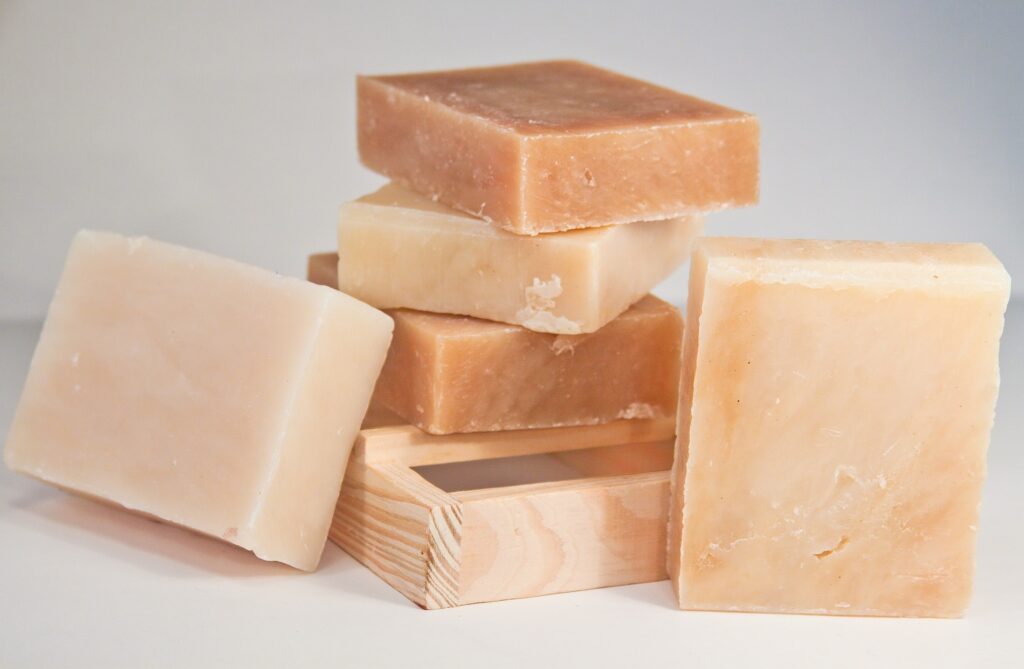
Soap has been used for centuries as a way to clean and disinfect the skin. The first evidence of soap making dates back to ancient Babylon around 2800 BC. Since then, soap has become a household item with a variety of uses, such as personal hygiene, laundry, and even cleaning household items. As soap is a popular product, shipping soaps has become a common practice. In this article, we will discuss how to ship soaps properly and the regulations that come with it.
Types of Soap
There are several types of soap, each with unique characteristics and uses. The most common types include:
Bar soap is a solid form of soap that is used for personal hygiene. It is typically made from a combination of fats or oils, sodium hydroxide (lye), and water. Bar soap can be used for different purposes, including hand washing, bathing, and even shaving.
Liquid soap is a soap that is in a liquid form. It is commonly used for personal hygiene and household cleaning. Liquid soap is made by combining fats or oils with potassium hydroxide and water.
Castile soap is a type of soap made from olive oil and water. It is known for its mild and gentle cleansing properties and is often used for baby products and people with sensitive skin.
Glycerin soap is a type of soap that is made from glycerin and vegetable oil. It is known for its moisturizing properties and is often used in skincare products.
Packing and Shipping Soaps
Proper packaging and shipping of soaps are crucial to ensure they arrive at their destination undamaged. Here are some tips for packing and shipping different types of soaps:
- Bar Soap: Bar soap should be wrapped in a protective covering such as bubble wrap, tissue paper, or a plastic bag to prevent damage during transit. The wrapped bar soap should then be placed in a sturdy box with enough padding to prevent movement during shipping.
- Liquid Soap: Liquid soap should be packed in a leak-proof container and then placed in a padded box. The container should be sealed with tape to prevent any leaks during transit.
- Castile Soap: Castile soap should be wrapped in a protective covering and then placed in a sturdy box with enough padding to prevent movement during shipping.
- Glycerin Soap: Glycerin soap should be wrapped in a protective covering and then placed in a sturdy box with enough padding to prevent movement during shipping.
Regulations in Shipping Soaps
When shipping soaps, it is important to adhere to the regulations set by different couriers. Different couriers have different rules, and it is essential to check their policies before shipping soaps. Here are some of the regulations set by different couriers:
- United States Postal Service (USPS): The USPS has specific guidelines for shipping soap. The soap must be wrapped in a waterproof material, and the box must be sturdy enough to prevent damage during transit. The maximum weight of the package should not exceed 70 pounds, and the dimensions should not exceed 108 inches in length and girth combined.
- FedEx: FedEx has similar guidelines for shipping soap. The soap should be packed in a sturdy box with enough padding to prevent damage during transit. The maximum weight of the package should not exceed 150 pounds, and the dimensions should not exceed 119 inches in length and girth combined.
- UPS: UPS also has specific guidelines for shipping soap. The soap should be packed in a sturdy box with enough padding to prevent damage during transit. The maximum weight of the package should not exceed 150 pounds, and the dimensions should not exceed 165 inches in length and girth combined.
- DHL: DHL is another courier service that offers shipping services for soaps. They have guidelines that state that soap must be packed securely in a sturdy box, and there should be enough padding to prevent damage during transit. The maximum weight of the package should not exceed 150 pounds, and the dimensions should not exceed 118 inches in length and girth combined.
Shipping Rates
Shipping rates for soaps vary depending on the courier service, package size, and destination. Here are some examples of courier services and their rates for shipping soaps:
The USPS offers different shipping options, including Priority Mail and Priority Mail Express. The cost of shipping a small flat-rate box for Priority Mail starts at $8.50, and the cost of shipping a medium flat-rate box starts at $15.50. The cost of Priority Mail Express starts at $26.35 for a small flat-rate box and $45.95 for a medium flat-rate box.
FedEx offers different shipping options, including FedEx Ground and FedEx Express. The cost of shipping a 2 lb. package via FedEx Ground starts at $7.99, and the cost of shipping a 2 lb. package via FedEx Express starts at $26.49.
UPS offers different shipping options, including UPS Ground and UPS Next Day Air. The cost of shipping a 2 lb. package via UPS Ground starts at $8.65, and the cost of shipping a 2 lb. package via UPS Next Day Air starts at $27.19.
DHL offers different shipping options, including DHL Express and DHL eCommerce. The cost of shipping a 2 lb. package via DHL Express starts at $35.64, and the cost of shipping a 2 lb. package via DHL eCommerce starts at $9.99.
Shipping soaps is a common practice, and it is important to adhere to the regulations set by different courier services to ensure that the soaps arrive at their destination undamaged. Proper packaging and padding are crucial when shipping soaps, and different types of soap may require different packaging methods. Additionally, it is essential to check the guidelines set by different courier services and their shipping rates to choose the best option for your needs. With proper care and attention, shipping soaps can be a hassle-free process, and customers can enjoy their soap products without any damage or delays.
